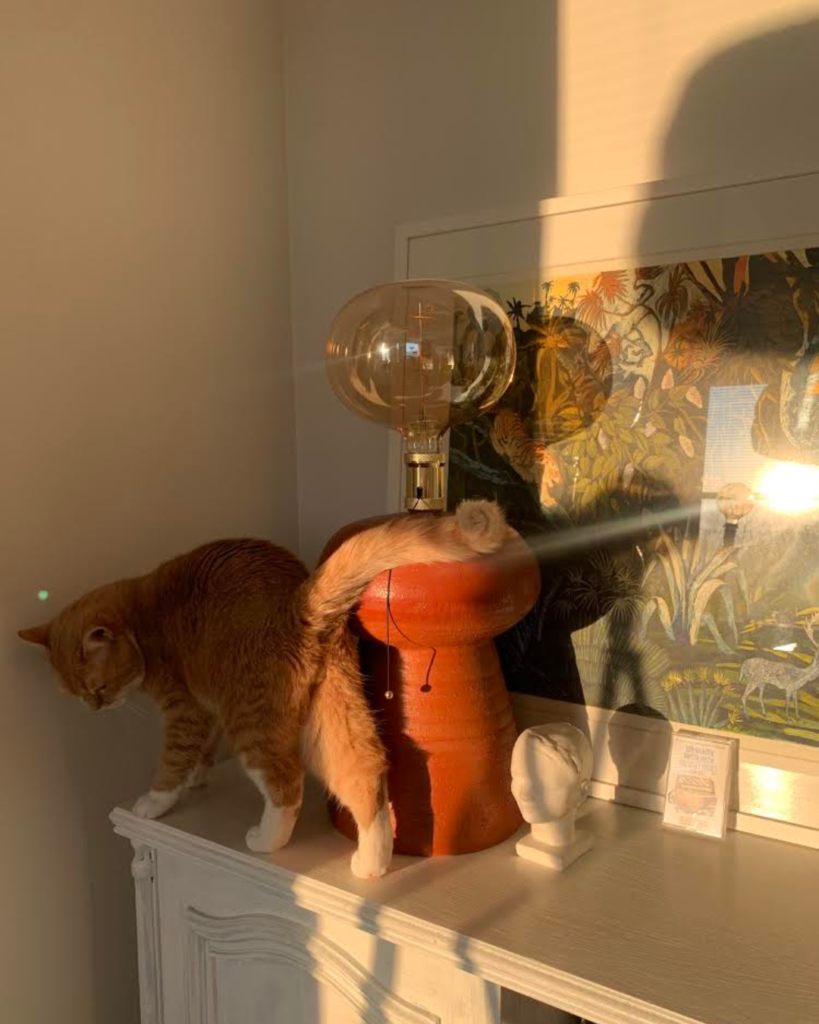At the beginning of summer 2022, the Helsinki Artists’ Association got awarded the Ecocompass certificate. The association is committed to taking into account the environmental impact of its activities, making concrete choices for the benefit of the environment, and constantly developing its activities to be more environmentally conscious. As a large local operator, the club also has a great responsibility to involve its members, staff, and customers in all its activities, both in galleries, Art Loans, visual arts schools, and course centers, as well as in its projects.
The original Finnish text by Aura Jaakkola is here:
My informal translation of the Helsinki Artist Association interview with me:
Get rid of greenwashing with local material Eva Spoof and UDUMBARA Helsinki.
Right in the heart of Helsinki’s Kallio, on Kaarlenkatu, an interesting brick-and-mortar shop stands out from the street scene. The delicate clay sculptures in the exhibition tell that something creative is going on: the ceramic artist Eva Spoof works here. We went to chat with Eva and ask her what thoughts ecology and sustainability in the field of ceramics evoke in her.

“The thought of greenwashing! Making ceramics is not ecological. Many of the raw materials traditionally used in ceramics come Globally from mines, and we don’t even know where.”
Spoof states that not only in ceramics, the problem today is overproduction: We make for the sake of creating and too much everything. Eva believes we get rid of our bad feelings by producing things frantically. Ceramics are also sold too cheap compared to the costs of making them.
Eva says not all art ceramics must be made of stoneware and fired at high temperatures. Although clay as a material is cheap, its ecological footprint is significant. This is because of high temperatures, wood burning, and raw materials that are harmful to the environment and have unknown origins.
When Spoof studied ceramics at the Finnish Ceramic School and the Kuopio School of Art and Design, Finnish wild clay was neither used nor appreciated. Spoof has been using Finnish wild redware clay since 2006, when she started making flower pots.
Handmade luxury in the heart of the inner city
UDUMBARA studio has been in Kallio in the middle of Helsinki since 1994. UDUMBARA products include flower pots, sculptural lamps, and sculptures. In addition, the studio organizes various pottery wheel workshops and retreats for individuals (in English) and company team-building events.
All UDUMBARA products are made by hand from the wild redware clay from the fields of Ojala in the Kultela village of Somero. The material’s roughness gives the dishes an earthy character and a unique look. With the choice of raw materials for her products, Eva wants to emphasize the exceptional value of local wild clay. The choice is ethical because the source of the material is known, and it does not require complex processing as a raw material. In addition, it is fired with electricity obtained from solar energy at a low temperature.

She wants to remind you that ready-made clays and glazes are the same for everyone, but the look made possible by wild clay is always unique.
She calls his products handmade luxury – and he defines luxury specifically as the luxury of making something with your hands in the middle of the modern city. She does not hesitate to use the language of marketing, which is quite unusual in the field of art. A turning point for her was working in a luxury clothing store at Helsinki Airport. The job as a responsible sales assistant at the Max Mara store taught her how to practice my profession and customer service and understand the costs of craftsmanship.
Stopping and locality
UDUMBARA also organizes, e.g., Mindful Pottery retreats that combine learning pottery throwing and meditation. Spoof wants to offer its customers the opportunity to stop and live in the moment amidst the hustle and bustle of everyday life, at activities.
According to her, there has recently been more interest in local production in the ceramics field. He greatly interests those colleagues who genuinely strive for new, more sustainable solutions. For example, she mentions the Kainuun kaolin event and exhibition initiated by visual artist Katariina Guthwert. According to Spoof, ceramics are trendy now, and locality and wild clay are in.
She encourages her artist colleagues to consider becoming aware of the sources of raw materials. She feels ecological and ethical thinking promotes creativity: What if clay is not fired or no glaze is used? Artists could also prefer environmentally friendly alternatives to the raw materials used. She hopes (and according to her understanding, this is happening ) that the current art education, with its materials theory, will consider the origin of raw materials and environmental risks to an increasing extent.
In the future, she will be interested in making products without firing compostable items.
Finally, Eva Spoof reminds us that even though ecological work is valuable in itself, you can also act ethically in all art-making, considering human rights by being aware of the origin of raw materials. He hopes that the EU corporate responsibility law, which Heidi Hautala (Vice-President of the European Parliament) has been pushing for a long time, will also be reflected in artists’ production.